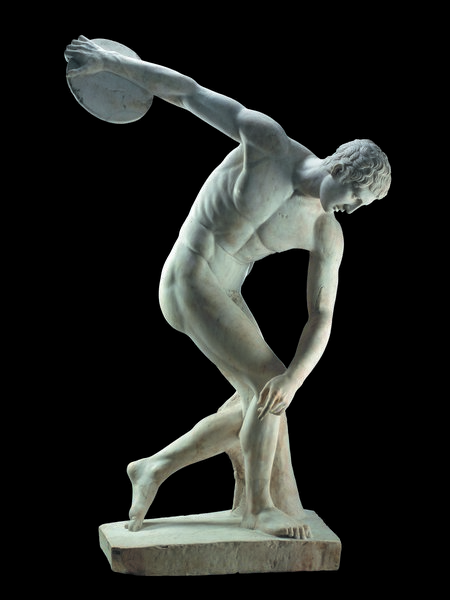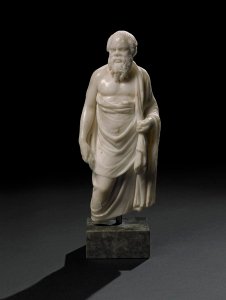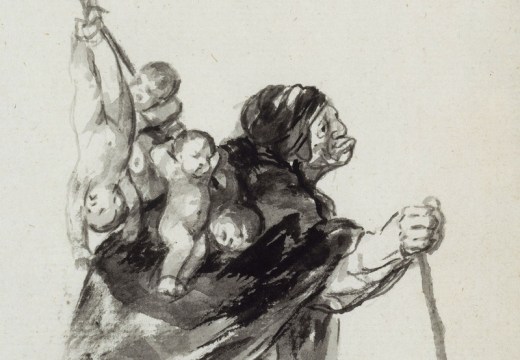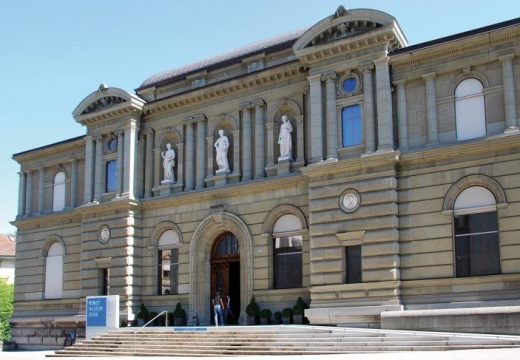‘He shone among the other pentathletes as the bright moon in the middle of the month outshines the stars; in this way he showed his wondrous body to the great ring of watching Greeks…’ (Bacchylides Ep. 9.20–23)
Written in praise of the victorious pentathlete Automedes of Phlius, the words of the 5th-century BC lyric poet Bacchylides reveal much about ancient Greek thinking on the (male) body. Nude, athletic, marvellous, the ideal body was a winning body, successful in competition as on the battlefield. Crucially, it was also a spectacle, a body performed, observed, admired and desired, and consequently a body that could be commented on and contested.

Marble statue of a discus-thrower (discobolus) by Myron. (Roman copy of a bronze Greek original of the 5th century BC © The Trustees of the British Museum
In its breathtaking new exhibition, ‘Defining Beauty’, the British Museum presents a remarkable array of classical bodies for us to marvel at, putting us in the place of Bacchylides’ ring of watching Greeks. Masterpieces, some never before seen in the UK, have been brought together and presented to stunning effect. Gods and goddesses, heroes, athletes, lithe muscles, rippling torsos, and sensuous, tactile flesh are all here, all mesmerising in their vitality.
The exhibition successfully invites us to admire the virtuoso skill of these artists and their works. Its main contentions are that, uniquely amongst the ancient cultures of the Mediterranean, the nude male body was not considered shameful by the Greeks, but beautiful, a morally-charged costume indicative of civic virtue, excellence and honour; and that Greek artists were consequently intent on representing the ideal body as expression of an ideology that elided beauty with goodness (a concept known in Greek as kalokagathia). Male beauty, as Bacchylides confirms, was athletic, hard, and powerful; female beauty by contrast was soft and sensuous.
In this respect, the show offers a traditional presentation of Greek art that differs little from the familiar accounts given by Kenneth Clark and Ernst Gombrich in the 1950s. But it is also an exhibition that allows us to experience the ways in which the Greeks negotiated concepts of the body, both ideal and non-ideal: rather than prescribing how the body should look, each of these representations is instead a means of exploring what it could mean to look male or female, Greek or non-Greek, divine or mortal. And in the very act of setting up such taxonomies, these bodies reveal that classification is in fact far from simple.
Some bodies at first glance appear straightforward: the first room presents four icons of classical sculpture, epitomes of the Greek male body-ideal and the Greek commitment to ever-more naturalistic depiction. But their ‘realism’ is deceptive. A bronze athlete seen scraping his toned body clean of oil and dust presents an impossible, hyper-realistic version of male beauty: his chiselled torso and excessively defined Apollo’s belt are a challenge to any mortal viewer, akin to the impossible brightness of Bacchylides’ winning athlete; his lips and nipples inlaid with copper don’t just heighten the realism of his presence but in their too-sharp vividness push him above and beyond reality. Likewise, Myron’s Diskobolos depicts not a real athlete but a synthesis of parts combined to create a quasi-abstract ideal; and Polykleitos’ Doryphoros is a mathematically perfect body, balanced, ordered, symmetrical. These aren’t real men: they are supermen.

Marble statuette of Socrates (a Hellenistic original of the 2nd century BC, or a Roman copy, Alexandria, Egypt). © The Trustees of the British Museum
Elsewhere, ithyphallic satyrs stalk across painted vases and assault nymphs, their bodies combining an ideal male torso with the tail and ears of a horse or goat. These images remind us that man can also be less than human, transgressing against the ideal; the athletic body now appears as a sexual threat. Depictions of Sokrates, pot-bellied and satyr-faced, suggest that a beautiful mind was not always indicated by a beautiful body. By contrast, Herakles’ superhuman physique – seen on a series of vases depicting the Twelve Labours – is capable of terrible violence as well as noble heroism.
Female bodies prove even more productive sites for exploring the confusion of ideals. A sleeping woman – sensuous, nude, unguarded – reveals male genitalia when viewed frontally: as Mary Beard has suggested, this shocks the viewer to question the simple dichotomy of gendered bodies, to recalibrate the figure’s meaning as we walk around it. A wounded Amazon is seductive and vulnerable in death – as tragically alluring as any dying slave or felled gladiator – although, as a female warrior and foreigner, she was also considered transgressive. Subtler ambiguity is discernible everywhere, however, even in the most familiar of sculptural types. A naked, crouching Aphrodite – her back turned to us – beguiles the viewer-voyeur with the promise of pliant, mortal flesh (her fingers flicker beckoningly above her shoulder) before revealing her divinity with a fearsomely confrontational stare. This beauty is dangerous, and indeed while the aesthetic allure of ancient art is superbly affirmed throughout the exhibition, its underlying ambiguities and complexities continue to lurk – perhaps inevitably – in the shadows.
In the end, these bodies reveal that idealised somatic types can be problematic, that beauty was rarely straightforward or, despite the exhibition’s title, finite. They challenge us to locate ourselves in their midst.
‘Defining Beauty: the body in ancient Greek art’ is at the British Museum, London, until 5 July.
Related Articles
How Neil MacGregor saved the British Museum (Tiffany Jenkins)
The Classics Cabal (Fleur Macdonald)
The Winged Victory of Samothrace is back at the Louvre (Caroline Rossiter)
Ideal Man at the Musée d’Orsay (Caroline Rossiter)
Unlimited access from just $16 every 3 months
Subscribe to get unlimited and exclusive access to the top art stories, interviews and exhibition reviews.

















![Masterpiece [Re]discovery 2022. Photo: Ben Fisher Photography, courtesy of Masterpiece London](http://www.apollo-magazine.com/wp-content/uploads/2022/07/MPL2022_4263.jpg)
It’s time for the government of London to return to its rightful home